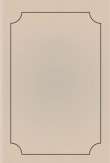You are here
قراءة كتاب Giorgione
تنويه: تعرض هنا نبذة من اول ١٠ صفحات فقط من الكتاب الالكتروني، لقراءة الكتاب كاملا اضغط على الزر “اشتر الآن"
by this subtle scheme, and the picture becomes, not figures with landscape background, but landscape with figures.
The reproduction unduly exaggerates the contrasts of light and shade, and conveys little of the mellowness and richness of atmospheric effect which characterise the original. Unlike the brilliance of colouring in the Castelfranco picture, dark reds, browns, and greens here give a sombre tone which is accentuated by the dullness of surface due to old varnishes.
"The Three Philosophers," or "The Chaldean Sages," as the picture at Vienna has long been strangely named, shows the artist again treating a classical story in his own fantastic way. Virgil has enshrined in verse the legend of the arrival of the Trojan Aeneas in Italy,[17] and Giorgione depicts the moment when Evander, the aged seer-king, and his son Pallas point out to the wanderer the site of the future Capitol. Again we find the same poetical presentation, not representation, of a legendary subject, again the same feeling for the beauties of nature. How Giorgione has revelled in the glories of the setting sun, the long shadows of the evening twilight, the tall-stemmed trees, the moss-grown rock! The figures are but a pretext, we feel, for an idyllic scene, where the story is subordinated to the expression of sensuous charm.
This work was seen by the Anonimo in 1525, in the house of Taddeo Contarini at Venice. It was then believed to have been completed by Sebastiano del Piombo, Giorgione's pupil. If so,—and there is no valid reason to doubt the statement,—Giorgione left unfinished a picture on which he was at work some years before his death, for the style clearly indicates that the artist had not yet reached the maturity of his later period. The figures still recall those of Bellini, the modelling is close and careful, the forms compact, and reminiscent of the quattrocento. It is noticeable that the type of the Pallas is identical with that of S. John Baptist in Sebastiano's early altar-piece in S. Giovanni Crisostomo at Venice, but it would be unwise to dramatise on the share (if any) which the pupil had in completing the work of his master. The credit of invention must indubitably rest with Giorgione, but the damage which the picture has sustained through neglect and repainting in years gone by, renders certainty of discrimination between the two hands a matter of impossibility.
The colouring is rich and varied; the orange horizon, the distant blue hill, and the pale, clear evening light, with violet-tinted clouds, give a wonderful depth behind the dark tree-trunks. The effect of the delicate leaves and feathery trees at the edge of the rock, relieved against the pale sky, is superb. A spirit of solemnity broods over the scene, fit feeling at so eventful a moment in the history of the past.
The composition, which looks so unstudied, is really arranged on the usual triangular basis. The group of figures on the right is balanced on the left by the great rock—the future Capitol—(which is thus brought prominently into notice), and the landscape background again forms the apex. The added depth and feeling for space shows how Giorgione had learnt to compose in three dimensions, the technical advance over the "Adrastus and Hypsipyle" indicating a period subsequent to that picture, though probably anterior to the Castelfranco altar-piece.
We have now taken the three universally accepted Giorgiones; how are we to proceed in our investigations? The simplest course will be to take the pictures acknowledged by those modern writers who have devoted most study to the question, and examine them in the light of the results to which we have attained. Those writers are Crowe and Cavalcaselle, who published their account of Giorgione in 1871, and Morelli, who wrote in 1877. Now it is notorious that the results at which these critics arrived are often widely divergent, but a great deal too much has been made of the differences and not enough of the points of agreement.




